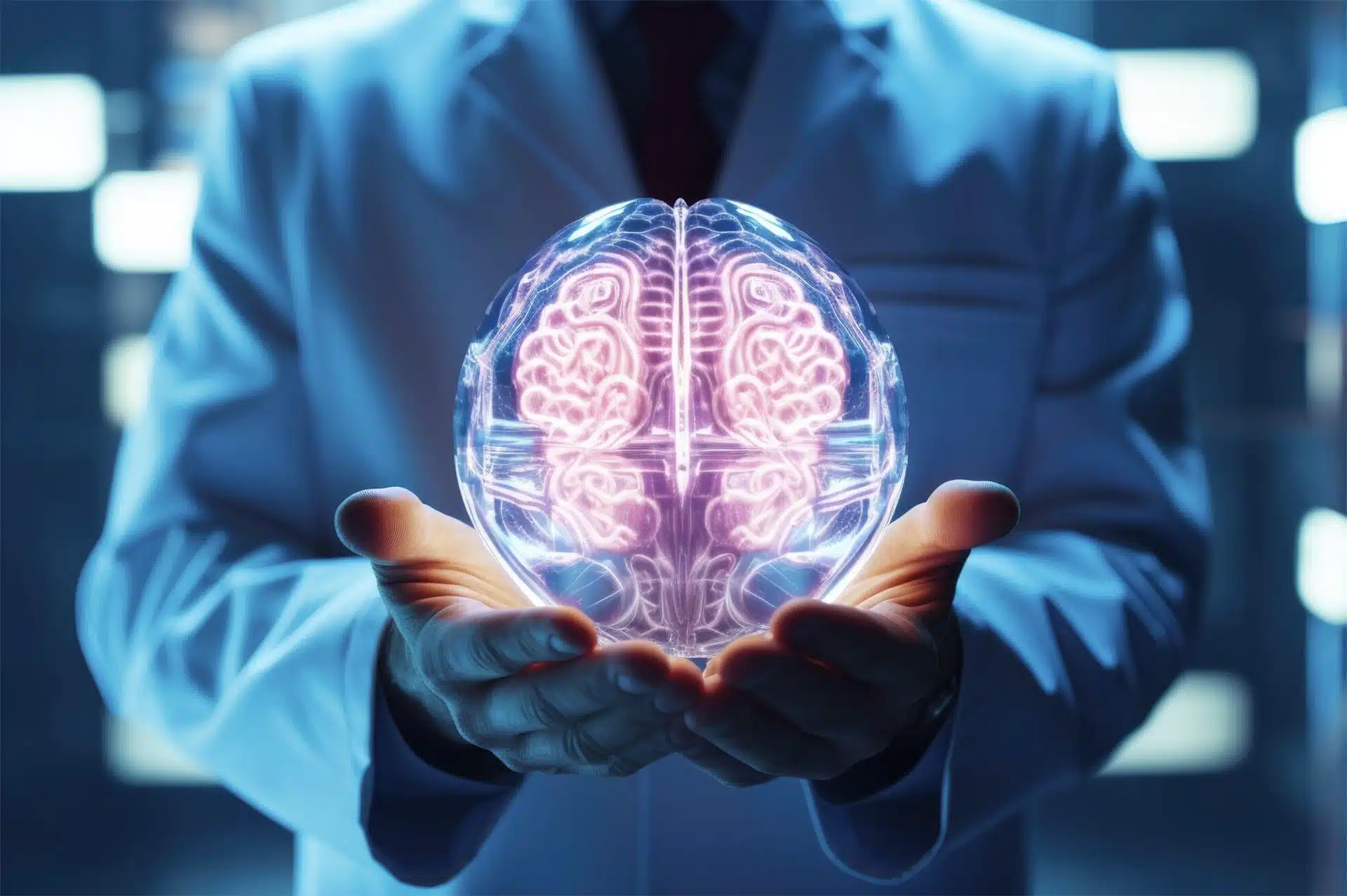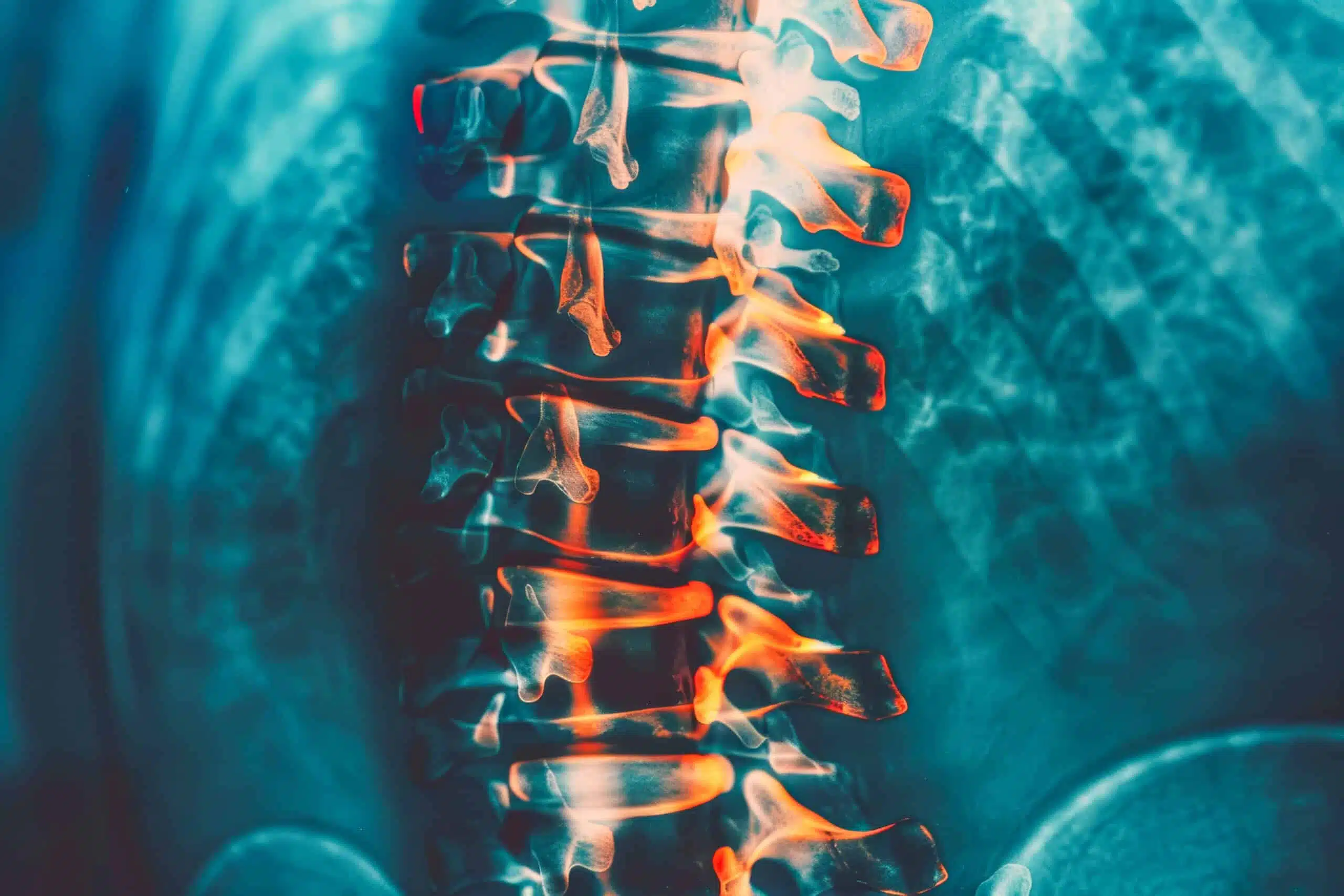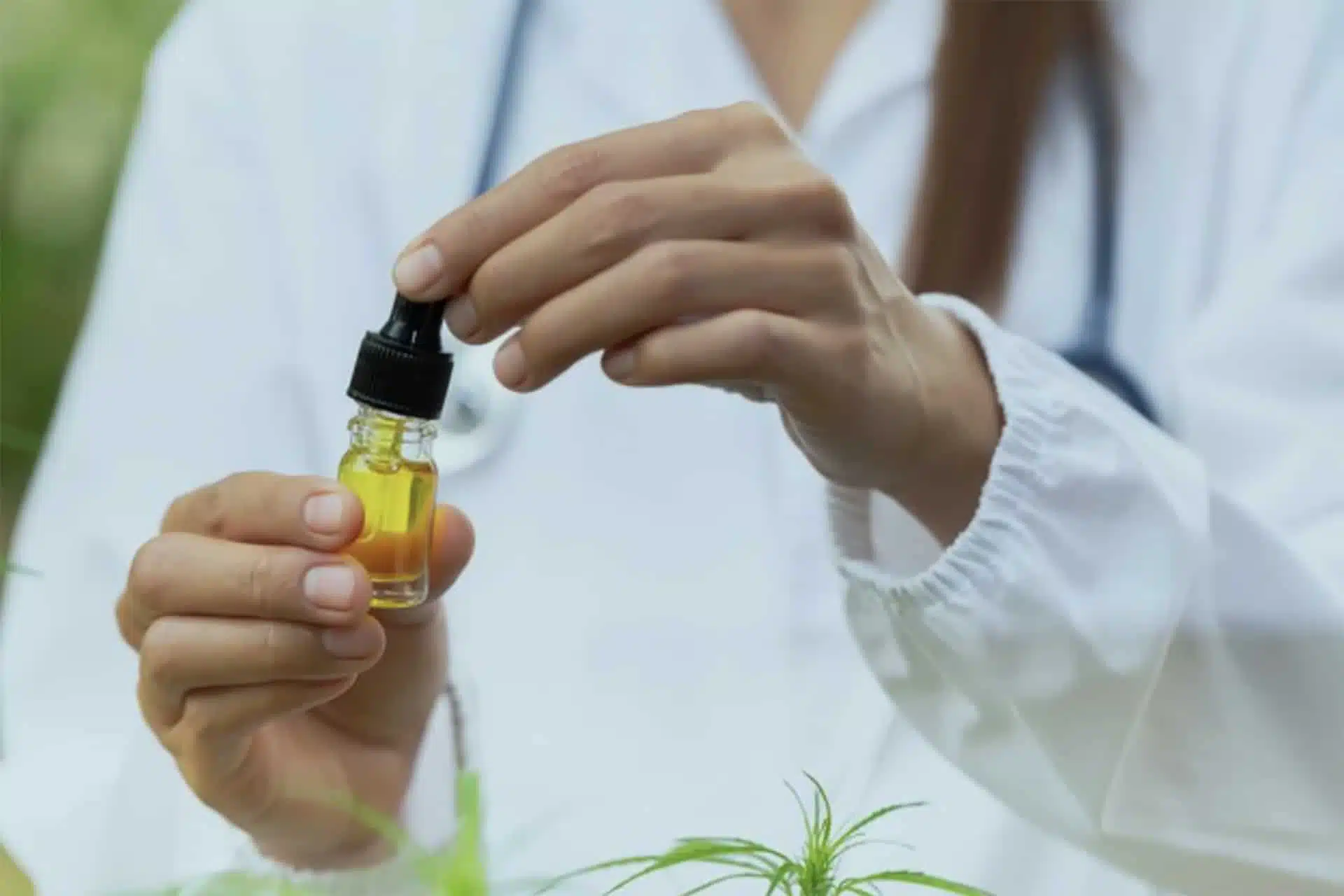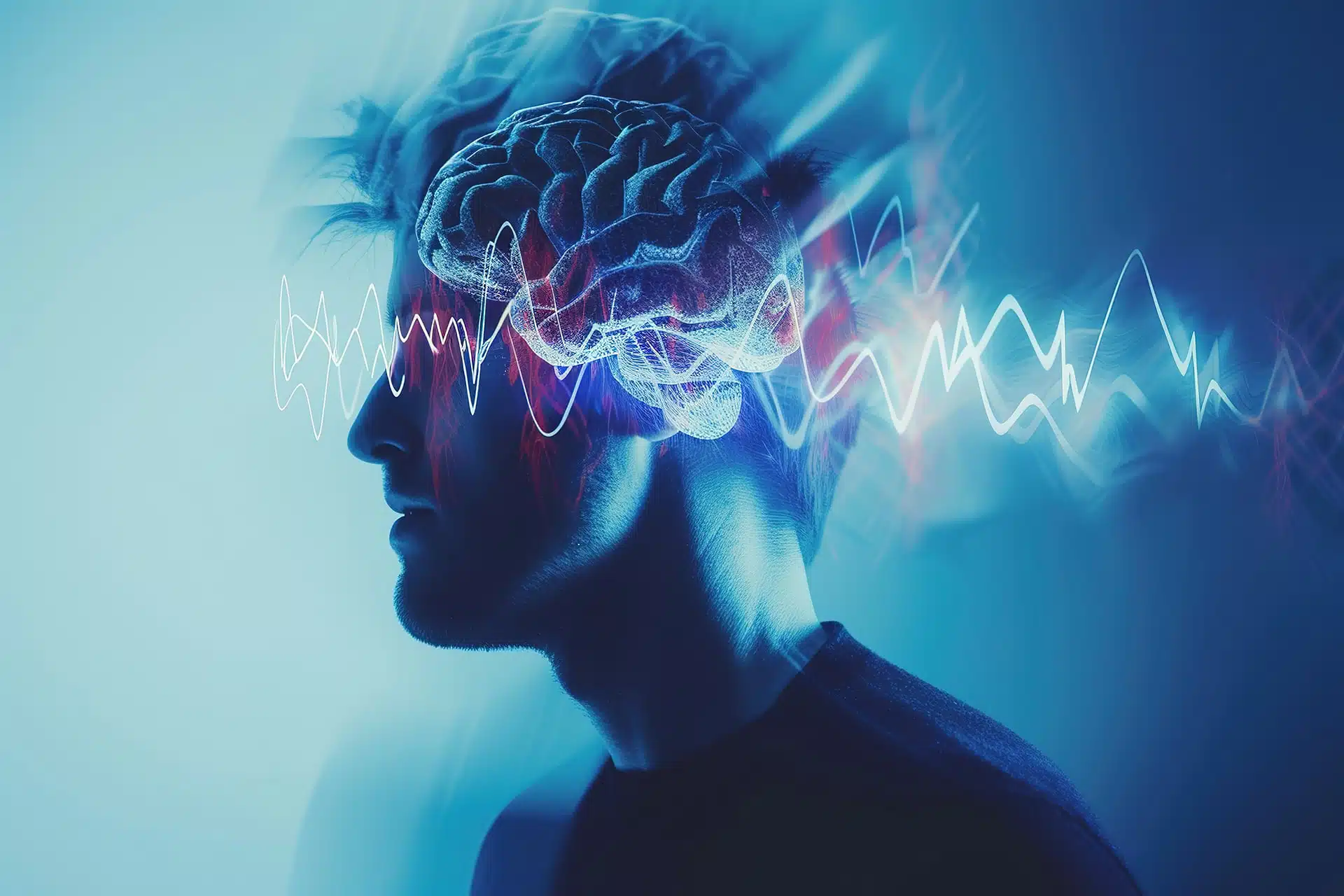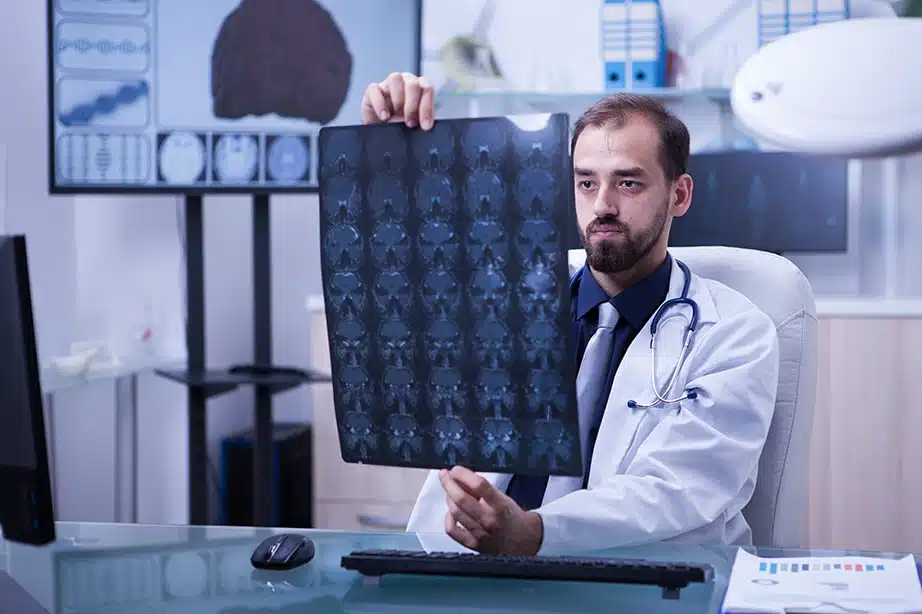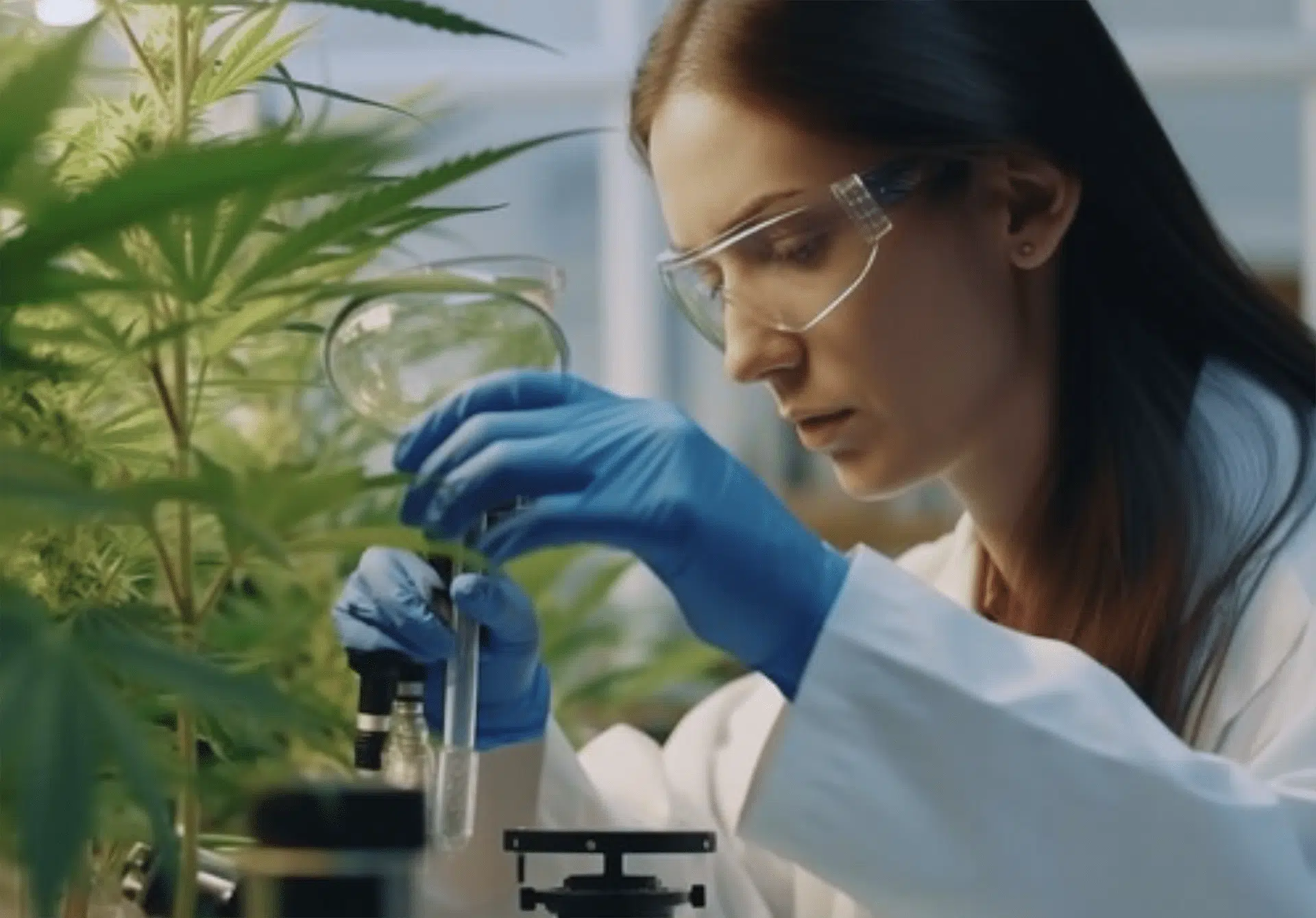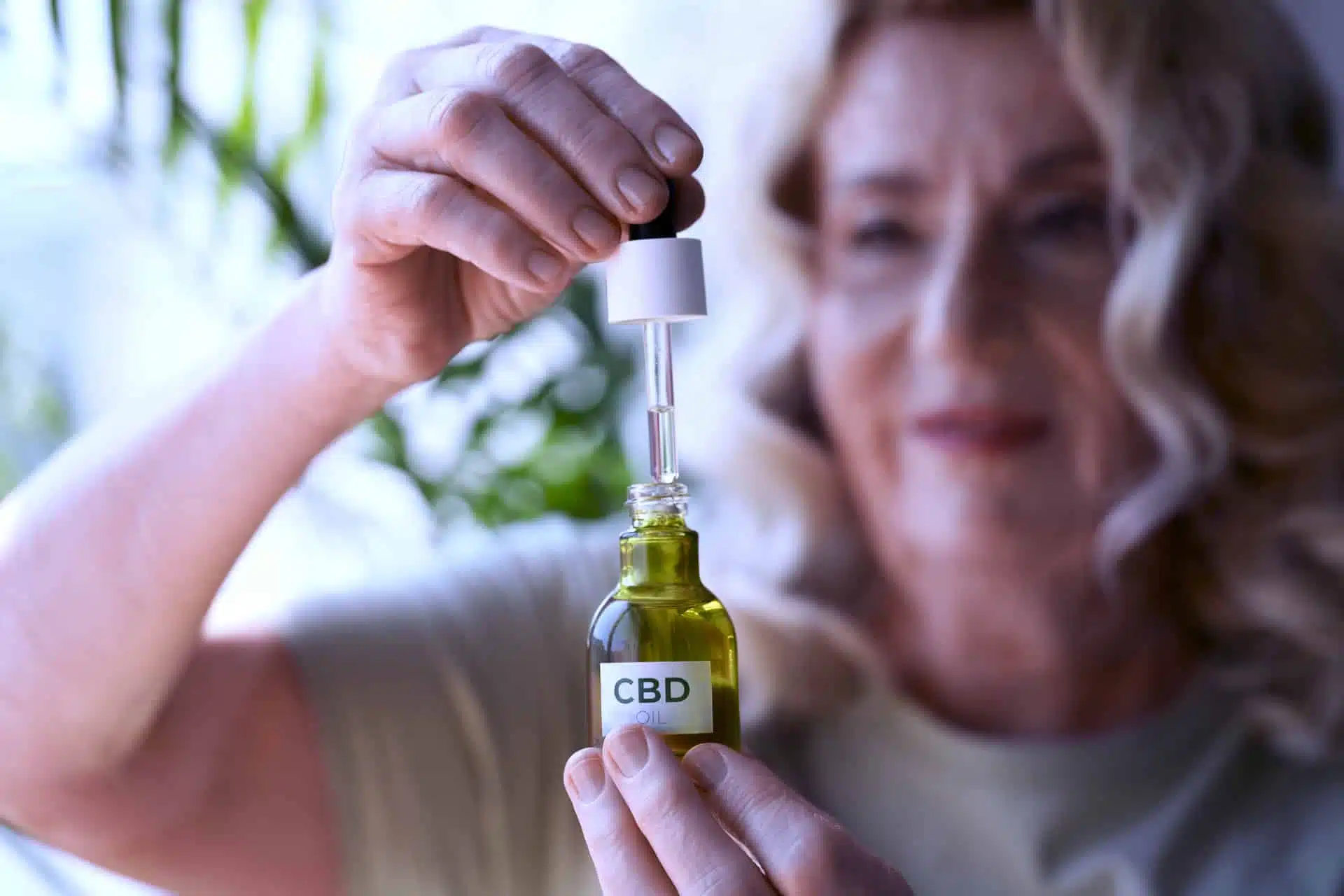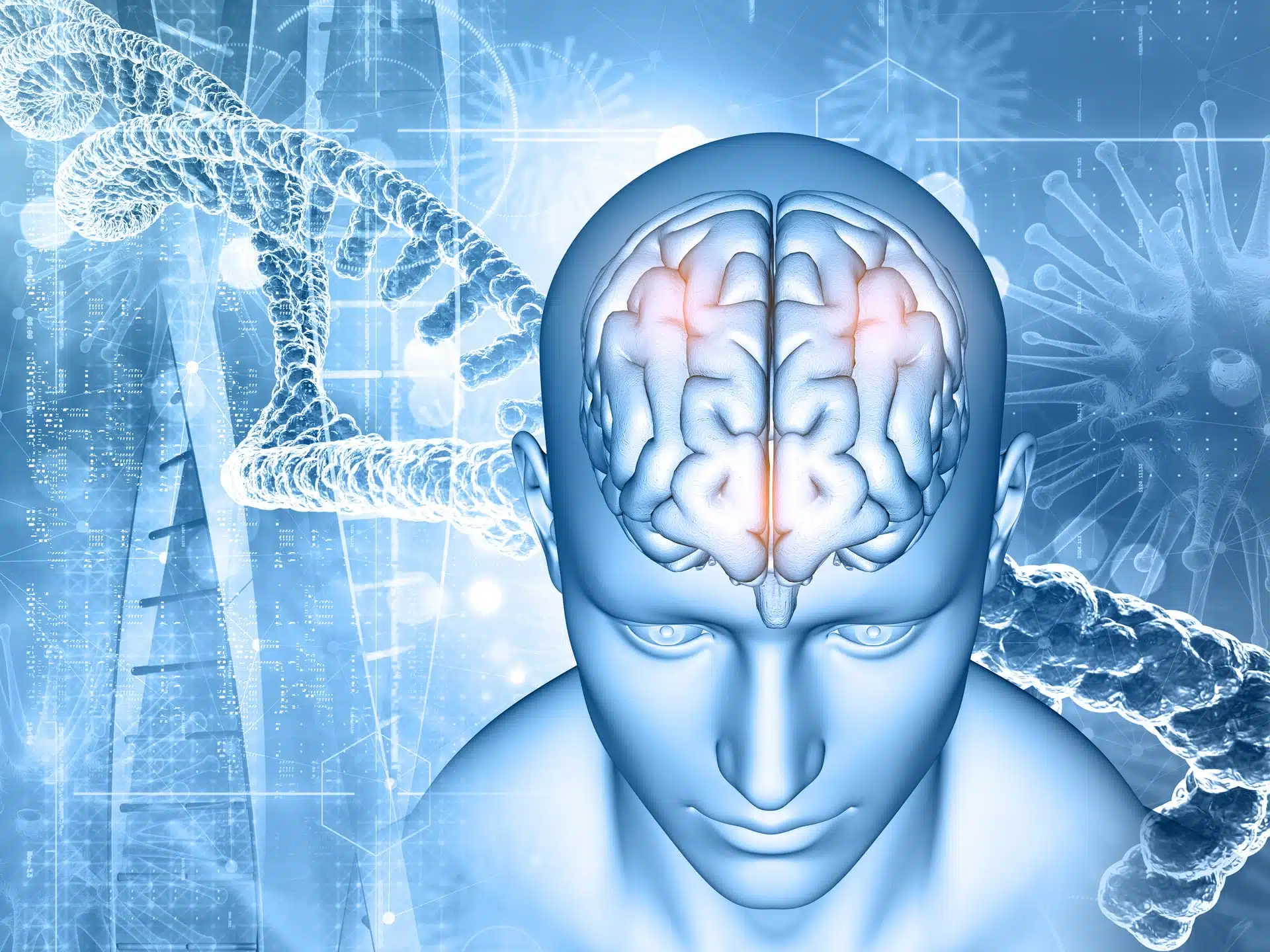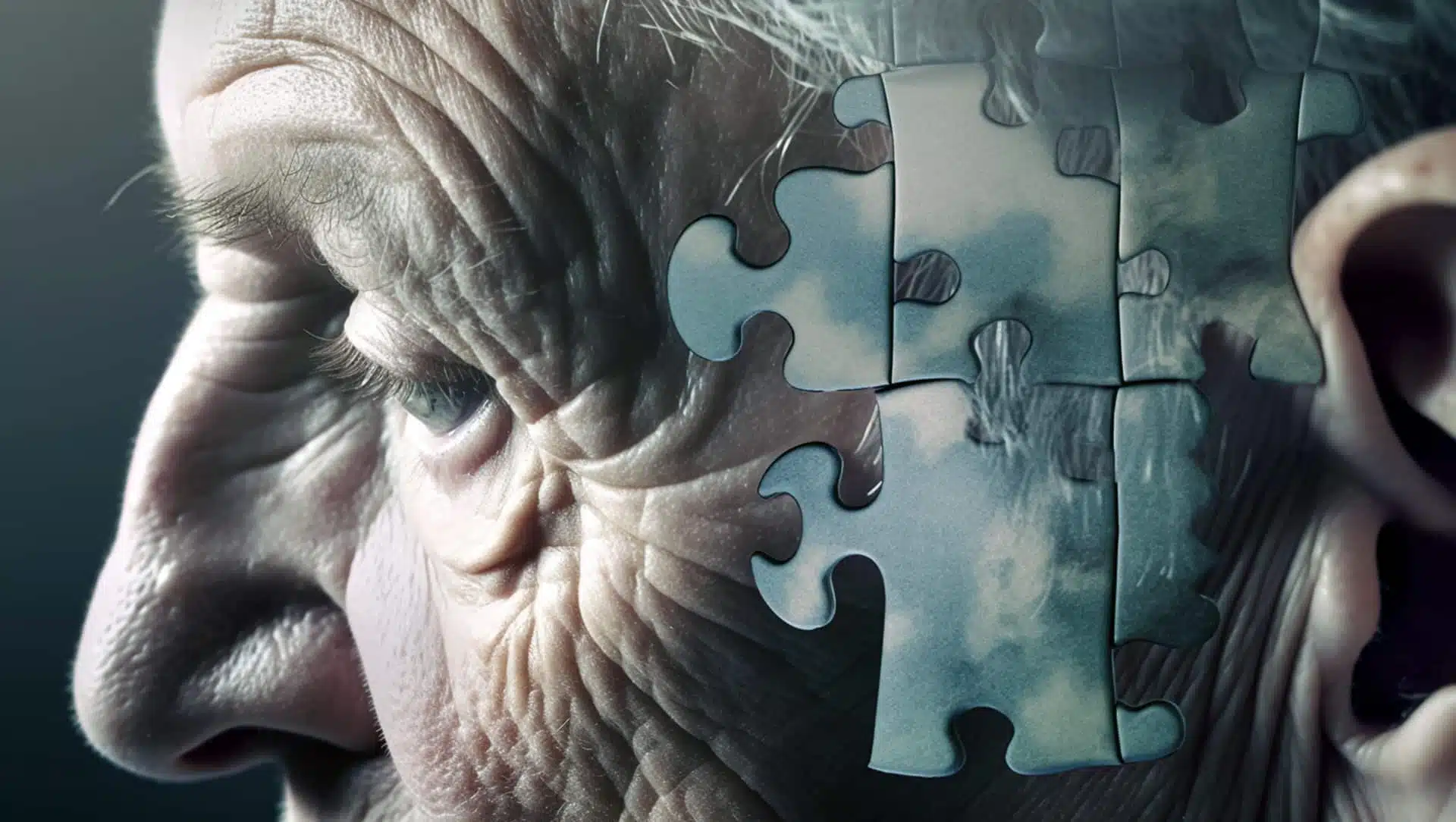Share
Huntington’s disease and Medical Cannabis

Huntington’s disease (HD) is a neurodegenerative condition with a hereditary autosomal dominant genetic origin that causes nerve cells in the brain to decay over time. Although Huntington’s disease (HD) symptoms can manifest between infancy and old age, they most commonly appear in early to middle adulthood, dealing a devastating psychological blow both to the person receiving an HD diagnosis and their families, as the symptoms usually worsen over a short period of 10 to 25 years. Thus, Huntington’s is known as a family disease, due to the fact that every child of a parent with HD has a 50% chance of inheriting the faulty gene.
In terms of clinical features, HD’s onset is nigh unperceptible; the triad of motor, cognitive, and emotional disturbances comes slowly. This phase is known as the prediagnostic phase, where individuals might become depressed, irritable, disinhibited, forgetful, or anxious. Eventually, this stage transitions into the diagnostic phase, during which physical symptoms emerge. Initially, these include subtle changes in coordination and minor involuntary movements, progressing to chorea (abnormal involuntary movements), lack of coordination, and difficulty performing voluntary motor movements. Worsening dysarthria (speech disorder caused by weak or poorly controlled muscles in the mouth, face, or upper respiratory system), dysphagia (difficulty swallowing), and slowed saccadic eye movements (simultaneous movement of the eyes) also occur. In this stage, cognitive function also worsens, impairing planning, organization, and new motor skill development. While long-term memory is spared degeneration, short-term memory is severely affected. Speech worsens faster than comprehension, eventually leading to patients losing the ability to speak but retaining a significant degree of comprehension.
References
Walker, F.O. (2007). Huntington’s disease. The Lancet, [online] 369(9557), pp.218–228. doi:https://doi.org/10.1016/s0140-6736(07)60111-1.
Ross, Christopher A., and R. Margolis. “Huntington disease.” Medicine76 (2020): 305-338
Regarding Huntington’s disease and Cannabinoids
Genetics and Pathophysiology
As previously mentioned, Huntington’s disease (HD) is a hereditary condition; it was the first disease mapped using the techniques of linkage analysis with DNA probes. The gene, named HTT gene, is located on chromosome 4p16.3. Expansion of a polymorphic trinucleotide repeat (CAG)n results in the production of a mutant huntingtin protein containing an abnormally long polyglutamine tract, which is toxic to neurons.
In vitro studies suggest that polyglutamine stretches exceeding a threshold of 37 residues initiate a process of protein aggregation, starting with dimers and trimers, then progressing to larger oligomers. This polyglutamine aggregation eventually overcomes the cells’ ability to degrade them, while at the same time interfering with the normal function of other proteins. This results in neuronal dysfunction and eventually neurodegeneration. The formation of the protein aggregates is dependent on the concentration of the mutant HTT protein, which accounts for the observed delayed onset of HD and the close association between disease severity and the length of the polyglutamine repeats.
Ageing is the major risk factor for neurodegenerative diseases like Alzheimer’s, Parkinson’s and Huntington’s. The incidence of these conditions is poised to increase in coming years, there’s no cure for any of them and available treatments manage only the symptoms, but do not target the underlying cause of the disease.
The Endocannabinoid System
The plant Cannabis sativa commonly know as Marijuana, has been know and used by many cultures, its uses ranged from medicinal like relieving pain, to the use of fibrers for clothing and rope making, to the use in religious rituals, but it was during the 19th century with cases and testimonials indicating that marijuana could mitigate neurologic symptoms in some diseases that the plant took a particular place in medical practice. From the 1960’s, major breakthroughs in research occurred, leading to the identification of delta-9-tetrahydrocannabinol (THC) and over 60 other cannabinoids as well as cannabidiol (CBD) and approximately 260 more non-psychoactive compounds. In the 1990’s the receptors responsible for many of the actions of Δ9-THC were identified, and formed the endocannabinoid system (ECS) consisting of cannabinoid receptors, CB1 and CB2, that mediate the physiological effects of cannabinoids and belong to the superfamily of G-protein-coupled receptors (GPCRs), there’s also endogenous ligands, and proteins for their biosynthesis, degradation, and transport. Cannabinoids primarily influence the central nervous system (CNS) through their interaction with CB1 receptors. These receptors are abundant in brain regions controlling movement, thinking, emotions, and sensory perception. While predominantly found on neurons, CB1 receptors are also present, at lower levels, on various glial cells like astrocytes and oligodendrocytes, as well as neural stem cells. In contrast, CB2 receptors appear to be limited to cells of the immune system.
Cannabinoid pharmacology/therapeutics
Presently the existing pharmacological therapies for HD are extremely limited and focus primarily in the treatment of choreic movements by using neuroleptics, and the use of psychotropic medications, to address depression or behavioural problems.
Cannabinoids were studied both as neuroprotective agents and symptom-relieving agents, in both cases, the research reached the clinical phase. Studies conducted in animal models as well as with human postmortem tissue samples, from patients with HD, revealed several changes in CB1, CB2 and hydrolysing enzymes, a reduction in the number of CB1 receptors was also observed.
The stimulation of the CB1 receptors prevented their deterioration thus allowing the ECS to inhibit the excitotoxic events that initiate neuron damage and to regulate growth factor generation that promotes neuron survival. CB2 receptors are mostly found in microglia, the resident immune cells of the central nervous system (CNS), they act as the brain’s macrophages, being first and main line of defence against pathogens and damaged cells, they also secrete factors that support neurons as well as anti-inflammatory molecules, thus having an important protecting function. Preclinical data have pointed to a potential role for CB2 in reducing microglial activation and preventing neurodegeneration.
The following table summarizes the neuroprotective effects of various cannabinoids observed in preclinical models of Huntington’s Disease (HD)
| Cannabinoid | Receptor | Model | Effect | Notes |
| WIN 55,212-2, Δ9-THC | CB1 | Quinolinate, Malonate, R6/2 | Protects striatal neurons | May work by mitigating excitotoxic damage |
| CB1 agonists (genetic rescue) | CB1 | R6/2 | Improves synaptic connections | Not effective for motor function |
| Selective CB2 agonists | CB2 | Malonate, R6/2, Quinolinate | Reduces inflammation, protects neurons | Targets microglial activation |
| CBD | n/a | 3-Nitropropionate | Protects neurons | May involve PPARs or antioxidant mechanisms |
| CBG | n/a | R6/2, 3-Nitropropionate | Protects neurons | Mechanism unclear, independent of CB receptors |
| CBD + Δ9-THC (Sativex®) | Mixed | Malonate, 3-Nitropropionate | Protects neurons | Effectiveness in R6/2 depends on Δ9-THC form |
While preclinical studies suggest potential benefits of cannabinoids for Huntington’s disease (HD), clinical trials however have yielded mixed results.

Early Trials Focused on Symptom Relief:
- The first trials in the 1990s tested the effects of CBD and synthetic THC (nabilone) in reducing choreic movements, a hallmark symptom of HD. These studies however reported either no improvement or even worsening of chorea
- One case report and a pilot study did show some benefit of nabilone on chorea and behavioral problems
- Recently, a study explored the effect of various cannabinoid formulations (Sativex®, nabilone, dronabinol) on dystonia, another common symptom in HD. Patients showed improvements in dystonia, along with reduced irritability and apathy.
Neuroprotection Efforts:
Encouraged by preclinical data on the neuroprotective effects of CBD and THC combinations, a clinical trial in Spain investigated Sativex® as a potential disease-modifying therapy in HD, unfortunately, the trial did not return evidence that Sativex® slowed the disease progression. This could be due to the short treatment period (12 weeks) and a strong placebo effect.
The following table summarizes the clinical trials investigating the use of cannabinoids for treating Huntington’s Disease (HD).
| Study | Year | Design | Findings | Formulations |
|---|---|---|---|---|
| Curtis & Rickards | 2006 | Case Report | Improved behavior and reduced chorea in a patient | Nabilone (1mg capsule/day) |
| Curtis et al. | 2009 | Randomized Controlled Trial | Improved chorea, neuropsychiatric index, and trend for improved behavior | Nabilone (1 or 2mg capsule) |
| Saft et al. | 2018 | Case-Control Study | Improved motor score and dystonia subscore | Sativex® (12 sprays) or Dronabinol (4.4-5mg) or Sativex® (7 sprays) or Dronabinol (2.8mg) or Nabilone (0.5-1mg) |
| López-Sendón Moreno et al. | 2016 | Randomized Controlled Trial | No significant difference in motor score | Sativex® (oral spray, up to 12 sprays/day) |
References
Akinyemi, E., Randhawa, G., Longoria, V., & Zeine, R. (2020). Medical Marijuana Effects in Movement Disorders, Focus on Huntington Disease; A Literature Review. Journal of Pharmacy & Pharmaceutical Sciences, 23, 389–395. doi:https://doi.org/10.18433/jpps30967.
Bates, G. P., Dorsey, R., Gusella, J. F., Hayden, M. R., Kay, C., Leavitt, B. R., Nance, M., Ross, C. A., Scahill, R. I., Wetzel, R., Wild, E. J., & Tabrizi, S. J. (2015). Huntington disease. Nature Reviews Disease Primers, 1(1). doi:https://doi.org/10.1038/nrdp.2015.5.
McColgan, P., & Tabrizi, S. J. (2017). Huntington’s disease: a clinical review. European Journal of Neurology, 25(1), 24–34. doi:https://doi.org/10.1111/ene.13413.
ACNP. (n.d.). Neuropsychopharmacology – 5th Generation of Progress. [online] Available at: https://acnp.org/digital-library/neuropsychopharmacology-5th-generation-progress/
Walker, F.O. (2007). Huntington’s disease. The Lancet, [online] 369(9557), pp.218–228. doi:https://doi.org/10.1016/s0140-6736(07)60111-1
Nance, M. A. (2017). Chapter 1 – Genetics of Huntington disease. [online] ScienceDirect. Available at: https://www.sciencedirect.com/science/article/abs/pii/B9780128018934000018
Cannabinoids in Neurologic and Mental Disease. (2015). Elsevier. doi:https://doi.org/10.1016/c2013-0-00592-0.
Murillo-Rodriguez, E., Pandi-Perumal, S. R., & Monti, J. M. (Eds.). (2021). Cannabinoids and Neuropsychiatric Disorders. Advances in Experimental Medicine and Biology. Cham: Springer International Publishing. doi:https://doi.org/10.1007/978-3-030-57369-0.
Laprairie, R. B., Bagher, A. M., Rourke, J. L., Zrein, A., Cairns, E. A., Kelly, M. E. M., Sinal, C. J., Kulkarni, P. M., Thakur, G. A., & Denovan-Wright, E. M. (2019). Positive allosteric modulation of the type 1 cannabinoid receptor reduces the signs and symptoms of Huntington’s disease in the R6/2 mouse model. Neuropharmacology, 151, 1–12. doi:https://doi.org/10.1016/j.neuropharm.2019.03.033.
Sagredo, O., Pazos, M., Valdeolivas, S., & Fernández-Ruiz, J. (2012). Cannabinoids: Novel Medicines for the Treatment of Huntington’s Disease. Recent Patents on CNS Drug Discovery, 7(1), 41–48. doi:10.2174/157488912798842278.
Fernández-Ruiz, J., Gómez-Ruiz, M., García, C., Hernández, M., & Ramos, J. A. (2017). Modeling Neurodegenerative Disorders for Developing Cannabinoid-Based Neuroprotective Therapies. Methods in Enzymology, 175–198. doi:https://doi.org/10.1016/bs.mie.2017.06.021.
Aymerich, M. S., Aso, E., Abellanas, M. A., Tolon, R. M., Ramos, J. A., Ferrer, I., Romero, J., & Fernández-Ruiz, J. (2018). Cannabinoid pharmacology/therapeutics in chronic degenerative disorders affecting the central nervous system. Biochemical Pharmacology, 157, 67–84. doi:https://doi.org/10.1016/j.bcp.2018.08.016.
Clinical Trials
Neuroprotection by Cannabinoids in Huntington’s Disease
ClinicalTrials.gov ID NCT01502046



